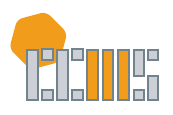Abstract / Synopsis
Evident in human prehistory and across immense cultural variation in human activities, symmetry has been perceived and utilized as an integrative and guiding principle. In our long-term collaborative work with Indigenous Knowledge holders, particularly Yupiaq Eskimos of Alaska and Carolinian Islanders in Micronesia, we were struck by the centrality of symmetry and measuring as a comparison-of-quantities, and the practical and conceptual role of qukaq [center] and ayagneq [a place to begin]. They applied fundamental mathematical principles associated with symmetry and measuring in their everyday activities and in making artifacts. Inspired by their example, this paper explores the question: Could symmetry and measuring provide a systematic and integrative way to teach the foundations of mathematical thinking? We illustrate how the fundamental structures of symmetry, measuring, and comparison-of-quantities, starting with the embodied orthogonal axes, form a basis for properties of equality, aspects of numbers and operations (including place value), geometry and number line representations, functions, algebraic reasoning, and measurement. We conclude by embedding the earlier geometric constructions of triangles and squares within the unit circle and making explicit connections to trigonometric functions.
DOI
10.5642/jhummath.201901.07
Recommended Citation
Jerry Lipka, Barbara Adams, Monica Wong, David Koester & Karen Francois, "Symmetry and Measuring: Ways to Teach the Foundations of Mathematics Inspired by Yupiaq Elders," Journal of Humanistic Mathematics, Volume 9 Issue 1 (January 2019), pages 107-157. DOI: 10.5642/jhummath.201901.07. Available at: https://scholarship.claremont.edu/jhm/vol9/iss1/7
Terms of Use & License Information
Included in
Anthropology Commons, Indigenous Education Commons, Logic and Foundations of Mathematics Commons, Mathematics Commons, Science and Mathematics Education Commons
